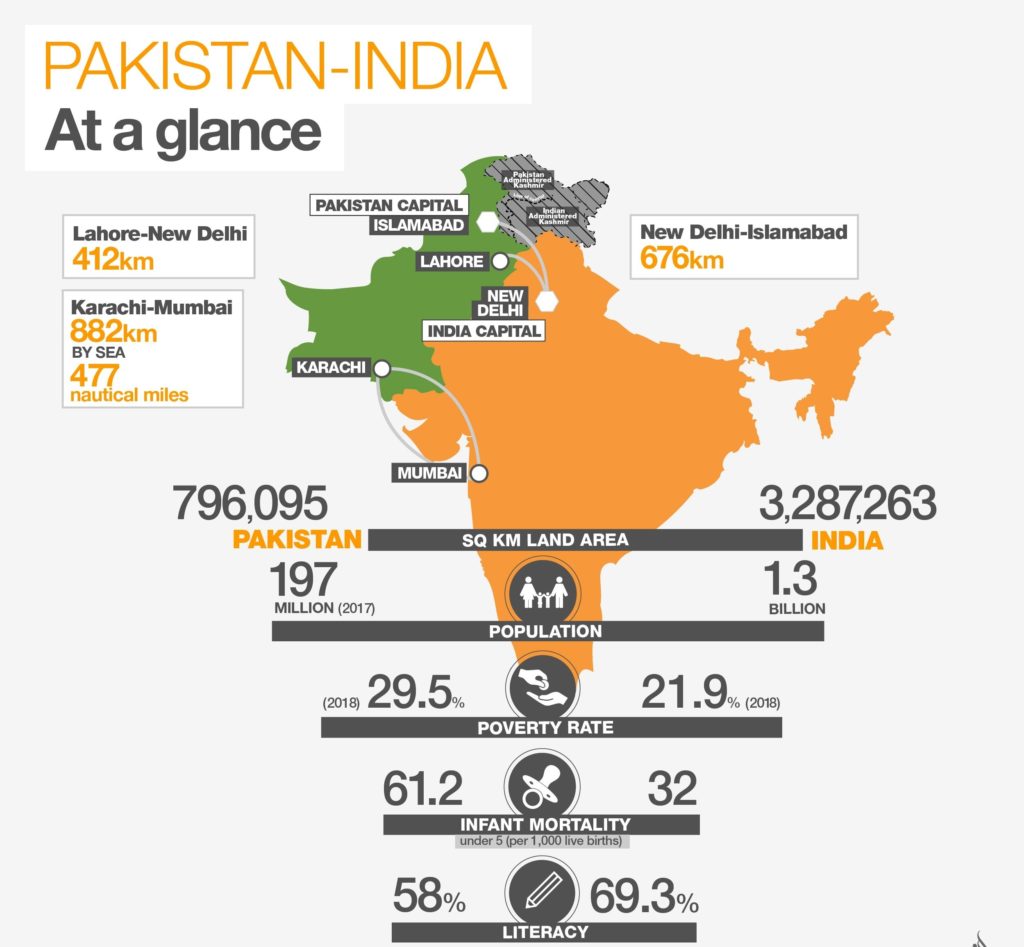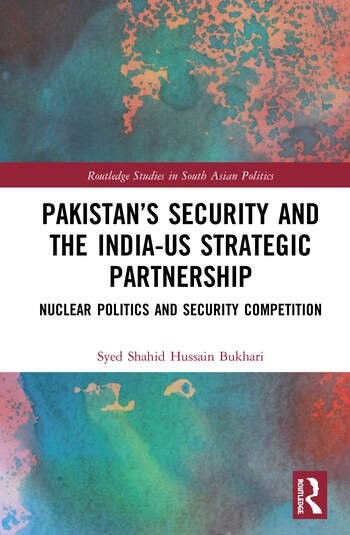The global nuclear debates started focusing on South Asian regional politics with the prevalence of nuclear shadows on the decades-long India-Pakistan rivalry. Academic circles of the international strategic community diverted their attention towards the South Asian nuclear order while developing their analysis on the India-Pakistan strategic competition. Apart from fluctuating viewpoints, the Indian and Pakistani academic circles preferred to maintain their contesting positions on the South Asian regional nuclear order. In the existing literature on the India-Pakistan nuclear arms race, very few authors have tried to address the question of strategic equilibrium in the nuclearised subcontinent. The book under review attempts to analyse the role of extra-regional interventions in fracturing the regional strategic balance in South Asia, which is mainly dependent on the India-Pakistan arms race. It is a study of South Asian arms competition and its unprecedented growth under the influences of great powers generally, and the United States specifically. The unstoppable arms competition between New Delhi and Islamabad is the central theme of the book written by Syed Shahid Hussain Bukhari. Bukhari believes in the influential role of great powers politics in the regional politics of South Asia, which is fracturing the regional strategic matrix of the South Asian subcontinent. Bukhari’s attempts to trace the negative impacts of foreign interventions on the regional stability of the nuclearised subcontinent where the two neighbouring nuclear powers have a decades-long history of confrontation. Bukhari, an emerging figure of the Pakistani strategic community, talks about the role of extra-regional powers in intensifying the regional security environment of South Asia, which revolves around the evolving strategic postures of New Delhi and Islamabad. In other words, Bukhari’s analysis has tried to maintain a comprehensive survey of India-Pakistan strategic competition and its relevance to the intense South Asian regional security environment. According to Bukhari’s academic instigations, the strategic competition between New Delhi and Islamabad has complicated the regional security environment in which the shadows of great power politics cannot be marginalised. While serving in a renowned university of Pakistan, Bukhari has cultivated a respectable position in the local intellectual community of Pakistan. The combination of the academic and research capabilities of Bukhari has allowed him maintain an exceptional account of different arguments in the book. He develops his views on the scope of regional stability, which is directly linked to the India-US strategic partnership and its impacts on Pakistan’s strategic calculations.

The book is divided into brief ten chapters, including the first and last chapters containing introductory and concluding analysis. The writer starts the debate from an undeniable interconnection between South Asian regional politics and global power politics. The involvement of extra-regional power shapes the regional strategic behaviour of New Delhi and Islamabad. The overwhelming impacts of great power politics affect the regional strategic competition between India and Pakistan, parallel to intensifying the security dilemma between both contestants. Apart from formally introducing the main idea in the initial introductory pages under the first chapter, the subsequent chapters continue the debate on the nature of India-US strategic bilateralism and its relevance to Pakistan’s security. The theoretical framework in the second chapter explains the conceptual understanding of the India-Pakistan nuclear competition in the presence of extra-regional players. In addition to the Balance of Power theory, the Power Transition theory also presents the theoretical description of India-Pakistan conflicted relations (p. 42). The genesis of decades-long rivalry between the pair of nuclear states can be traced to the post-independence period under the shadows of Cold War politics when the communist-capitalist expansionist policies placed South Asian under their contesting alliance systems. The third chapter covers the history of the India-Pakistan conflict concerning the global power politics where South Asia was encircled by three great powers, China, the US, and the Soviet Union. The disappearance of the Soviet Union from the international system and the formulation of a Soviet-less world politics resulted in a close Indo-US bilateralism collaboration. The signing of Next Step in Strategic Partnership (NSSP) between Vajpayee and the Bush governments revolutionised the bilateral cooperation between New Delhi and Washington (p. 52). The NSSP revolutionised the Indo-US strategic bilateralism without considering its impact on South Asian regional security. The author’s arguments on the NSSP tried to provide a glimpse of ongoing strategic collaboration between New Delhi and Washington and its effects on Pakistan’s defensive position in its home region. The fourth, fifth, and sixth chapters try to analyse the evolution of Indo-US strategic bilateralism from different angles, whereas the seventh chapter maintains a comprehensive account of India-Pakistan strategic competition. The interesting part of the book comes in the eighth and ninth chapters, which highlight the impacts of an inter-state interaction between India and the US on Pakistan. The arguments in both chapters attempt to convey the undeniable relevance of Pakistan’s security from the growing strategic closeness between Washington and New Delhi because the US’ multidimensional strategic support to India is leaving negative impacts on Pakistan’s position in the nuclearised subcontinent. The regional geostrategic calculations of India and the global geostrategic interests of the US are mutually hampering Islamabad’s standing in the regional politics of South Asia. The author’s analysis attempts to present an academic appraisal of multidimensional strategic interaction between the US and India, which is the main driving force behind the deteriorating security environment of the nuclearised subcontinent. In other words, the diversification of cooperative strategic ties between Washington and New Delhi ignores the scope of peace and stability in South Asia. The Indian and American leaders are strictly concentrating on multiplying their bilateral strategic connections, and the multi-layered strategic engagements of both states has upset the position of Pakistan in its home region.
The book is a fascinating account of analysis providing a fresh look at the South Asian strategic contest between the two nuclear states and the unprecedented growth of their perpetual conflict under global power politics. India’s inclusion in the greater American geostrategic priorities is fundamentally designed to counter the economic rise of China, which is purely a matter of great power politics without seriously considering the impact of Washington of India-centric South Asian policy on the regional strategic equilibrium of nuclearised subcontinent. While keeping in mind Pakistan’s growing security concerns in the presence of evolving multi-layered India-US collaboration in the field of security and defence, this book contains an exceptional interpretation of the American South Asian policy which is inflicting a sense of insecurity in Pakistan’s mindset. Based on the book’s central theme, it is appropriate to maintain that Bukhari’s way of analysing the India-Pakistan strategic contest is an appreciable addition to the existing literature on the complex South Asian security environment. Bukhari’s conceptually convincing and rationally impartial arguments has made his book an appropriate study for people interested in evaluating an unprecedented growth of South Asian regional politics under the influences of great power politics. Analogous to this book, Bukhari’s intellectual contributions in the ongoing academic debates of Pakistan’s strategic community have resulted in various research papers as well.





